Santa Barbara’s Many Paths to Becoming Clean & Sober
An Intimate Look at the Recovery Community in Our Party Town
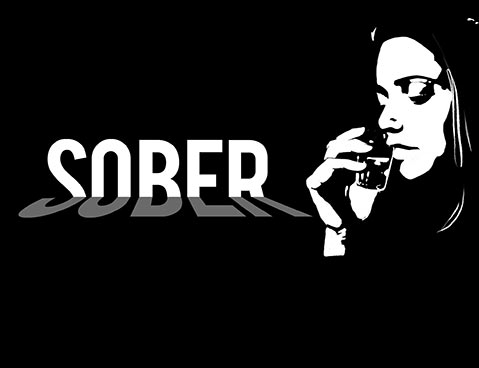
The Montecito YMCA offers a full schedule of kid-friendly programs, so it was very convenient for Jackie* to drop her daughter off at a swim lesson, give a quick hug, and hurry outside to the parking lot to buy drugs from a dealer she met through her children’s nanny. When the Y parking lot didn’t work, Jackie had a backup arrangement: Leave cash in one of her kid’s shoes outside on the porch and return a couple of hours later to find a small, folded bundle filled with white powder in its place.
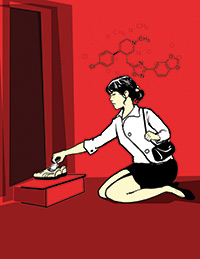
Jackie knew she was in trouble. Her need for drugs and alcohol had become the most important thing in her life, jeopardizing everything, and the problem was getting worse. She’d even been hiding the addiction from her therapist, until one desperate day, she finally confessed. He bluntly informed her that unless she got help, he would be forced to call Child Protective Services.
“That got my attention,” recalls Jackie today. “I was feeling insane, living this schizophrenic existence — PTA and car pools versus tequila and cocaine. Something had to give.”
Substance abuse is an epidemic in the United States. Chances are someone you know is an addict or alcoholic. It could be a neighbor’s kid or the woman who cuts your hair. Maybe it’s a colleague at work or your parent or your child. Maybe it’s you.
One in 10 deaths among adults is due to excessive drinking, according to the Centers for Disease Control and Prevention. In America, more people die every day from prescription drug addiction than gunshot wounds, car accidents, or suicide. Heroin, a cheaper alternative to opiates such as OxyContin and Vicodin, is now killing university students all over the country.
Santa Barbara is no exception. Despite the clichés that we are all living in paradise, our statistics reveal an underbelly of addiction. According to the county’s Alcohol and Drug Program, which directly treats about 4,000 people just for addiction at any given time, the baseline statistic is that of the 440,000 people countywide, a third of those who are of drinking age, will run into a “transitory problem,” such as a DUI or job loss, and 10 percent will develop a “full-blown substance use disorder,” explained the program manager, John Doyel. While methamphetamine abuse still runs rampant in North County, the South Coast’s new drug of choice is prescription pills, jumping from 5 to 20 percent of those being treated in the past decade. Adolescents, meanwhile, keep turning to marijuana. “Addiction knows no bounds,” said Doyel.

Law enforcement statistics are also disconcerting. In 2012 alone, the Santa Barbara County Sheriff’s Office arrested 1,026 people for felony drug offenses and nearly 5,000 for misdemeanor drug and alcohol offenses, and issued more than 2,200 citations for DUI. Of the more than 14,000 enforcement actions (not including traffic citations) made in 2012 by the Santa Barbara Police Department, more than 6,100 were directly related to alcohol and/or drugs, meaning that more than 40 percent of the cops’ collective time is spent dealing explicitly with substance-abuse disorders. “And those are just the major ones,” said police spokesperson Sergeant Riley Harwood, who’s seen alcohol or drug issues tied to many of the aggravated assault, domestic violence, and other arrests made in his 23 years in law enforcement. “There are a lot of arrests we make where alcohol or drugs are a peripheral factor.”
Hospital records tell a similar tale. As a snapshot, Santa Barbara Cottage Hospital treated about 480 alcohol poisoning and 167 drug overdose patients in 2012. Pulling that focus back to the past decade, Cottage’s Santa Barbara and Goleta Valley emergency rooms dealt with nearly 5,500 alcohol-related cases from 2004-2013.
According to Gordon Coburn, the chair of Santa Barbara City College’s addictive disorders counseling department, “Lower State Street has become a war zone of drinking after 10 p.m.” Referring to young women in particular, he concluded, “We don’t have an epidemic; we have a pandemic of substance abuse in Santa Barbara County.”
Perhaps it’s not surprising that, amid Santa Barbara’s celebratory culture and libatious nightlife, we have a large recovery community in which untold numbers of people are working hard to transform their lives. They come from every race, age, religion, socioeconomic status, and political background. They are “people who would normally not mix,” as it says in the Alcoholics Anonymous book (a k a the Big Book), “like passengers of a great liner the moment after rescue from shipwreck when camaraderie, joyousness, and democracy pervade the vessel from steerage to Captain’s table.”
Alcoholics Anonymous (AA) is the oldest and most prevalent program in Santa Barbara, but it’s just one of many ways to get clean and sober. Treatments are manifold and sometimes controversial. Many join 12-step programs like AA that require participants to remain anonymous and find a higher power “of their own understanding.” Others rely on medical or psychiatric methods. Some just go cold turkey without any support. There is no silver bullet.
Despite the differences, all programs acknowledge that recovery entails much more than just not using. Ned, a 79-year-old retired Ventura judge who’s been sober for 42 years, cautioned that there is no cure for this life-and-death illness — it is a lifelong commitment: “You’ve got to do the work,” he said. “And you’ve got to change everything so that drugs and alcohol no longer run your life.”
The Poster Child

Mia grew up in Northern California, the daughter of addicts. She sought comfort from her chaotic life through drugs, addicted by age 15. “I fell in love with pills and went for every kind of opiate I could find, taking prescriptions from my grandmother who had cancer, manipulating doctors, and stealing money to buy more,” she explained. “I’m a polysubstance user — a very specific combination of pills, pot, and meth with a little alcohol was the perfect recipe.”
Busted for shoplifting and possession in the San Joaquin Valley six years ago, her lawyer was able to convince the judge to send her to the Santa Barbara Rescue Mission’s Bethel House, a faith-centered, 12-month residential treatment facility for women on Yanonali Street. Close to 30 pounds underweight, a self-proclaimed “garbage disposal” for drugs, Mia admitted that she didn’t want to get sober, but it was the only way she could avoid a four-year prison term.
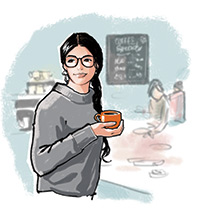
“I really didn’t know I had a problem,” admitted Mia. “The day I showed up, I had smoked meth and brought my sister’s pee with me because I knew they were going to test. I hadn’t realized that they would be in the bathroom with me, so I just confessed that I was dirty. I had no more ideas. I was done. Twelve months is a long time to stay in treatment, but I needed every second of it.”
Sitting at Coffee Cat across from the Courthouse recently, Mia cuts the quintessential California-girl profile: tanned, attractive, brimming with health. She works full-time in financial and client services, takes classes at UCSB, goes to daily 12-step meetings, and works with other women struggling with addiction. She takes full responsibility for both her past and her present, claiming to never think about drinking or drugs. Mia explained, “I have a fantastic life that I never could’ve imagined for myself.”
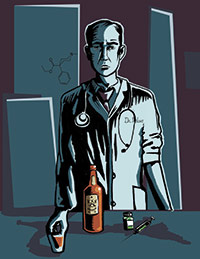
Physician, Heal Thyself
Every single day of the week, whether in church halls, at the beach, or in private homes, Alcoholics Anonymous members are gathering to support each other. There are more than 200 meetings each week in the area, with gender-specific, LGBT, and Spanish-speaking options, as well as ones open to nonalcoholics and closed to anyone not expressing a “desire to stop drinking.” Despite demographic disparities — it’s not uncommon to find Hollywood celebrities mingling with homeless itinerants — these men and women have established a network of compassionate, nonjudgmental support.
AA is a spiritual program, not a religious one. But Judge Ned, who’s sponsored many newcomers, always cautions wary candidates to first just attend an open meeting: “Sit in the back, and never say a word to anybody,” he advised. “If you don’t like it, you can always leave. And it won’t cost you a dime, but it just might save your life.”
It took Dr. Blain a long time to realize that. A successful, articulate, well-groomed physician and family man, he struggled with reconciling his life with that of an addict, which is not unusual for high-functioning users. He’d been drinking heavily for 15 years when he found himself shooting Demerol to mitigate his hangovers. “Within three months, I was using 1,000 milligrams daily,” he said. “They give about 100 milligrams to cancer patients in hospitals.”
An intervention by four employees and a psychologist brought him to his first treatment center. But denial is a dangerous symptom of the disease, so once there, Dr. Blain convinced everyone he didn’t really have a problem, that his condition was an aberration due to stress. He was out in 11 days and did stop the drugs but not the booze. Two and a half years later, the doc was back in rehab.
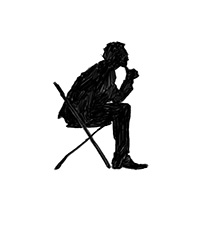
Upon coming home, he chose AA as his ongoing treatment program, despite his agnostic beliefs. “My job as a physician is to figure out what’s going on with the patient and come up with the best course of action,” he explained. “In this case, the best treatment plan, in my opinion, is AA. If you take the God part out and use it as a program of ethics and morals, it works.”
Sober for 12 years now, Dr. Blain believes the program changed him on the inside. “I know people who are productive citizens, nice people with full lives today, who once were living under bridges,” he said. “It’s pretty amazing. If I were religious, I’d call it a miracle.”
No God, More God
Since the spiritual emphasis of AA remains anathema to many, other recovery programs have risen in response, such as the national group Secular Organizations for Sobriety (SOS and sometimes called “Save Our Selves”), which recently began meeting in the Goleta Library on Wednesday evenings at 5 p.m. That was the kind of help sought out by Christine, a middle-aged woman who got sober last year. “I got a DUI and, in order to maintain my professional license, I was mandated to attend 12-step meetings,” she said. “When my sponsor told me to get on my knees to pray for sobriety, I knew this wasn’t going to work. There is no talk of higher power in SOS. We support each other and know that it is up to us to stop our addictions.”
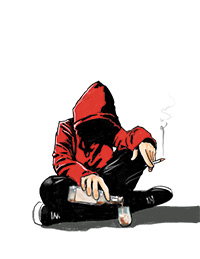
Others eschew programs altogether, such as Eileen, a former high-level executive in her sixties who’s dressed in the sophisticated style of her East Coast roots when we meet at Jeannine’s in Montecito. Reluctant about the interview, it’s quickly apparent that talking about alcohol makes Eileen uncomfortable, even though it’s been 10 years since her last drink. Indeed, she wishes she still could drink. “I just feel that my life is not as much fun,” she admitted. “I’m a loner, and booze was a social lubricant. It’s a lousy card to be dealt. If I could handle it, I’d love to be able to have three drinks, but I can’t. I would need three bottles.”
Eileen tried AA, but it wasn’t for her. “The whole ‘God thing’ was a total turnoff,” she recalled. “People said they were thankful to be an alcoholic, and I just couldn’t relate. But I heard enough to understand that I was really lucky that I never had a DUI or lost my job or killed anybody with my car.”
For Diane, it was actually the lack of religion that turned her away from AA. Sitting on a bench in Alice Keck Park Memorial Gardens, she explained that the “higher power” notion was not enough for her. Instead, Diane needed a personal relationship with Jesus Christ, so she joined Celebrate Recovery, a program based on both the 12 steps and the Bible’s beatitudes that meets at Hope Community Church in Santa Barbara, First Baptist Church in Carpinteria, and Good Shepherd Lutheran Church in Goleta. The message is clear: “Heal with Christ.” And that works for Diane. “Some people think religion or Christ or God are crutches,” she said. “But heck, we all need crutches when we are limping.”
Behind Bars
Danny was a 19-year-old college kid fueled by alcohol and Quaaludes when he shot and killed a man in Westwood on a Friday night in 1981. He served 31 years, 9 months, and 12 days, a sentence that was extended frequently due to bad behavior and dirty drug testing. It turned out that getting drugs in prison was easier than on the street. “I got loaded every day,” he remembered. “Heroin, speed, marijuana, alcohol — it’s big business inside. Corrupt cops, visitors smuggling stuff — there’s nothing that an ingenious con can’t get.”
He fooled himself and placated the parole board by attending self-help groups and AA meetings yet never stopped using. “I looked like Mr. Recovery,” he said. “I wrote articles for the newsletter, sponsored guys. But it wasn’t real.”
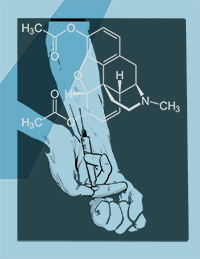
Then in 2002, a member of AA’s Hospitals and Institutions Panel, which brings meetings into prisons, pulled him aside to talk. Something clicked. “I became ‘free’ in there,” he said. “It was remarkable; my whole attitude toward life changed, and prison just became my address. It wasn’t my way of life anymore. It took another 10 years, but I got out.”
Today 53 years old, Danny doesn’t look or sound like a man who was locked up for decades — with no tattoos or piercings, he speaks softly with the vocabulary of an educated man. He sponsors many recently released men in Santa Barbara through AA and Narcotics Anonymous (NA), meeting them on Monday nights at the Alano Club on East Cota Street, where they chat about not “picking up” again. Danny is a strong mentor because if he can stay clean after 32 years behind bars, anybody can.
“I’ve never relapsed,” he said. “I know my actions under drugs and alcohol. It ruined three decades of my life. I could probably go out and drink tonight and be fine. Maybe five times, maybe 10. But the 12th time could bring me down. It’s Russian roulette, and I might as well grab the gun and put a bullet in it.”
Relapse Realities
The return to drinking and using after a period of abstinence is heart-wrenching. Erik, a clean-cut 25-year-old, is a “hope to die” heroin addict, his arm tattooed with a line written by Aldous Huxley in Brave New World: “I want God. I want poetry. I want danger.”
When I spoke with Erik this summer, he’d been sober for 110 days — this time. He’d detoxed at Cottage Hospital’s psychiatric inpatient unit, spent time at the hospital’s residential rehabilitation program, and shared a room in New House, one of the sober living facilities for men in Santa Barbara. He’d previously been clean for nine months but went back to using after a breakup.
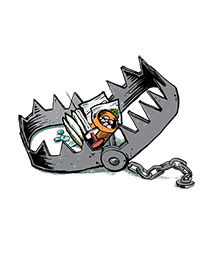
“I went through hell in detox, cleaned up, and was on fire for a while,” he explained of his previous clean period. “Then I met a girl, and when she relapsed, I relapsed. I started shooting meth. The needle is addictive in its own way. The bathroom turns into a murder scene after a while when you’re trying to find the spot to shoot.”
His best friend recently overdosed at age 25 from benzodiazepine, alcohol, and heroin, devastating Erik. “I know I’m young, but I don’t have any delusions that I have any more chances,” he said. “If I have a drink, a week later I’m shooting dope, and I’m certifiably insane when I pick up.”
Now under medical supervision, Erik takes Suboxone, a highly controversial drug for opiate addiction. He says it’s “worse than heroin” to kick but hopes he can titrate off it within the next six months. He’s also eating well, going to therapy, and attending meetings, and he believes he’s finally surrendered. “It’s so easy to get drugs in Santa Barbara, to connect through the party scene in Isla Vista or in the back of clubs all around town,” he said. “I have to accept that everything needs to change: my phone number, Facebook, all my old friends, and especially my thinking. That’s the real surrender.”
Personal Touch
Some members of Santa Barbara’s clean and sober community don’t like the group aspect of most 12-step programs. Peter Gallway is a licensed marriage and family therapist who’s worked in recovery for more than 15 years and just launched an intensive outpatient program on the Riviera called One to One, which offers individualized treatment. “It’s very hard to navigate this world,” he said. “Whatever we’re recovering from, we need help. The incidence of some kind of trauma underneath substance abuse is very high and, using individualized work, we can unearth some of these.”
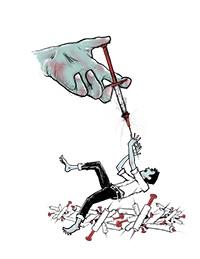
Robbin O’Neill agrees. She is the managing director of Recovery Fusion, a transitional after-treatment support company in Santa Barbara that offers personalized one-on-one services. Based on the principle that recovery is a process and not an event, O’Neill works in tandem with therapists to discern what her clients need in order to maintain their newfound sobriety. “It’s absolutely boots-on-the-ground, practical stuff,” she said. “People come out of rehab, and they don’t remember if there are drugs in the house or alcohol hidden under the bed. Often they are terrified to come back.”
But the most controversial approach of all may be non-abstinence, harm-reduction psychotherapy. Len Van Nostrand, cofounder and owner of Full Spectrum Recovery and Counseling in downtown Santa Barbara, believes in empowering his clients and “meeting them where they’re at.” He doesn’t eschew abstinence but contends that gradual and incremental changes work more effectively with many people who abuse mind-altering substances. “Not all problem drinkers are alcoholics, and not all drug users are addicts,” he said. “We work with our clients exploring alternative ways of coping with their issues.”
Fourteen years later, Jackie from Montecito joyfully talks about her daughter’s college plans and the wedding of her oldest boy. She’s worked hard for her sobriety, from rehab and therapy to AA and NA meetings.
“I drank and did drugs to feel better about myself, to stop that incessant critical voice that told me I’m not good enough,” she explained. “And then I couldn’t stop even when I wanted to. I am full of gratitude that I don’t have to live that way anymore, that I’m comfortable in my own skin.” And then, with a smile, she added, “Most of the time.”

Resources to Help
• Addiction Counseling and Integrative Clinical Services: 22 W. Micheltorena St., 729-2118
• Alcoholics Anonymous Central Office: 1213 State St., 962-3332, santabarbara.com
• Al-Anon: For families of alcoholics. 101 W. Canon Perdido St., 899-8302, alanonsantabarbara.info
• Alano Club: 235 E. Cota St., 962-5013, alanoclubsantabarbara.org
• Casa Serena Women’s Recovery Homes: 1515 Bath St., 966-1260, casaserena.org
• Celebrate Recovery: celebrate-recovery.org
• Cottage Residential Center: 316 W. Montecito St., 687-6681, sbch.org
• Council on Alcoholism and Drug Abuse: 232 E. Canon Perdido St., 963-1433, sbcada.org
• County Alcohol, Drug and Mental Health Services: (888) 868-1649, countyofsb.org/admhs
• Daniel Bryant Youth & Family Treatment Center: 1111 Garden St., 730-7575
• Full Spectrum Recovery: 601 E. Arrellaga St., Ste. 102, 966-5100, fullspectrumrecovery.com
• New House: 2434 Bath St., 563-6050, sbnewhouse.org
• One to One: Peter Gallway, (310) 927-1597
• Recovery Fusion: 689-1256, recoveryfusion.com
• Recovery Ranch: 252-5661, therecoveryranch.com
• Recovery Road Medical Center: 3891 State St., Ste. 205, 962-7800, recoveryroadmc.com
• SBCC Alcohol and Drug Counseling Program: 965-0581 x3021, adc.sbcc.edu
• Santa Barbara Rescue Mission: 535 E. Yanonali St., 966-1316, sbrm.org
• Secular Organizations for Sobriety: 698-6959, sossobriety.org
• Sheriff’s Treatment Program: sbsheriff.org/stp.html
• UCSB Alcohol & Drug Program: 893-5013, alcohol.sa.ucsb.edu



